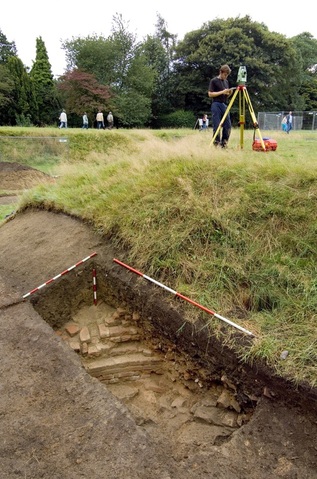MIDAS Heritage

MIDAS Heritage is a British cultural heritage standard for recording information on buildings, monuments, archaeological sites, shipwrecks and submerged landscapes, parks and gardens, battlefields, artefacts and ecofacts.
The data standard suggests the minimum level of information needed for recording heritage assets and covers the procedures involved in understanding, protecting and managing these assets. It also provides guidelines on how to support effective sharing of knowledge, data retrieval and long-term preservation of data.
MIDAS Heritage is freely available to anyone interested in recording historic environment information. It is used by national government organisations, local authorities, heritage sector organisations, amenity groups and societies, the research community and professional contractors.
The data standard suggests the minimum level of information needed for recording heritage assets and covers the procedures involved in understanding, protecting and managing these assets. It also provides guidelines on how to support effective sharing of knowledge, data retrieval and long-term preservation of data.
MIDAS Heritage is freely available to anyone interested in recording historic environment information. It is used by national government organisations, local authorities, heritage sector organisations, amenity groups and societies, the research community and professional contractors.
History
The first edition of the standard, MIDAS – A Manual and Data Standard for Monument Inventories, was published by the Royal Commission on the Historical Monuments of England (RCHME) in 1998. The organisation merged with English Heritage in 1999 and the updated version, MIDAS Heritage, was published in 2007 in collaboration with other UK heritage organisations. The standard was developed for and on behalf of the Forum on Information Standards in Heritage (FISH), a discussion forum aimed at helping to resolve standards and recording issues for the whole of the heritage sector.
CoverageMIDAS Heritage is a set of closely integrated data standards, rather than one single standard. It is designed to be used in conjunction with separate standards covering specific types of applications or projects, which will give the necessary data elements. Examples include SPECTRUM (artefacts), UK Gemini Discovery Metadata Standard (GIS), CIDOC Conceptual Reference Model (concepts and relationships), and Informing the Future of the Past: Guidelines for Historic Environment Records. MIDAS Heritage complies with the UK e-Government Metadata Standard (e-GMS), which is based on Dublin Core.
There are six main themes, each containing several Information Groups, which in turn contain a number of Information Units. The standard aims only to provide a common information framework and does not cover: what software or file format to use; what to call fields and tables in a database and how they are designed; what indexing terms to use; how to record archives and museum collections, or how to redesign an existing information system. |
Structure
The MIDAS Heritage data standard has a three-level structure with
1) Themes, describing the main subject areas at the broadest level; followed by
2) Information Groups, which outline the specific standard which should be included in any entry covering a particular subject; and
3) Units of Information, the basic 'facts' or items that make up an entry.
List of the themes and information groups
Heritage Asset Theme
Area (Information Group)
Monument
Artefact and Ecofact
Activities Theme
Investigative Activity
Designation and Protection
Heritage Asset Management Activity
Casework and Consultation
Research and Analysis
Historical Event
Information Sources Theme
Archive and Bibliography
Narrative and Synthesis
Management Activity Documentation
Spatial Information Theme
Location
Map Depiction
Temporal Information Theme
Date and Period
Actor Information Theme
Actor and Role
1) Themes, describing the main subject areas at the broadest level; followed by
2) Information Groups, which outline the specific standard which should be included in any entry covering a particular subject; and
3) Units of Information, the basic 'facts' or items that make up an entry.
List of the themes and information groups
Heritage Asset Theme
Area (Information Group)
Monument
Artefact and Ecofact
Activities Theme
Investigative Activity
Designation and Protection
Heritage Asset Management Activity
Casework and Consultation
Research and Analysis
Historical Event
Information Sources Theme
Archive and Bibliography
Narrative and Synthesis
Management Activity Documentation
Spatial Information Theme
Location
Map Depiction
Temporal Information Theme
Date and Period
Actor Information Theme
Actor and Role
Dictionary
MIDAS Heritage includes a complete Dictionary of the different information units, describing how they should be used and when. See the separate page for a full list of terms.

